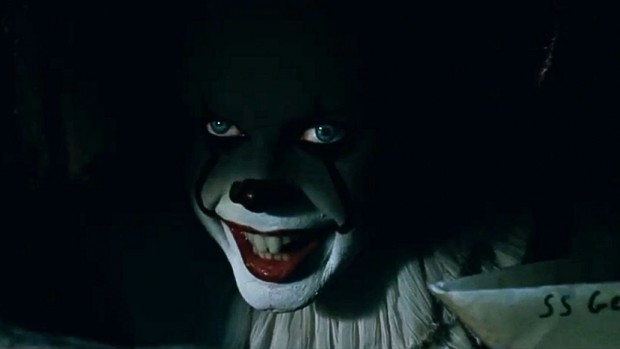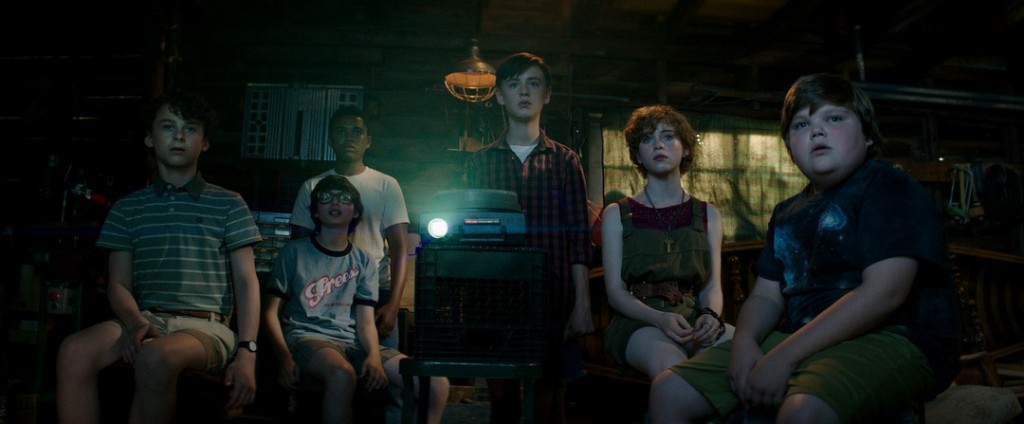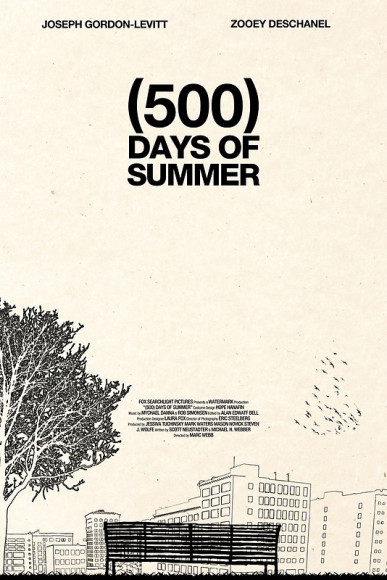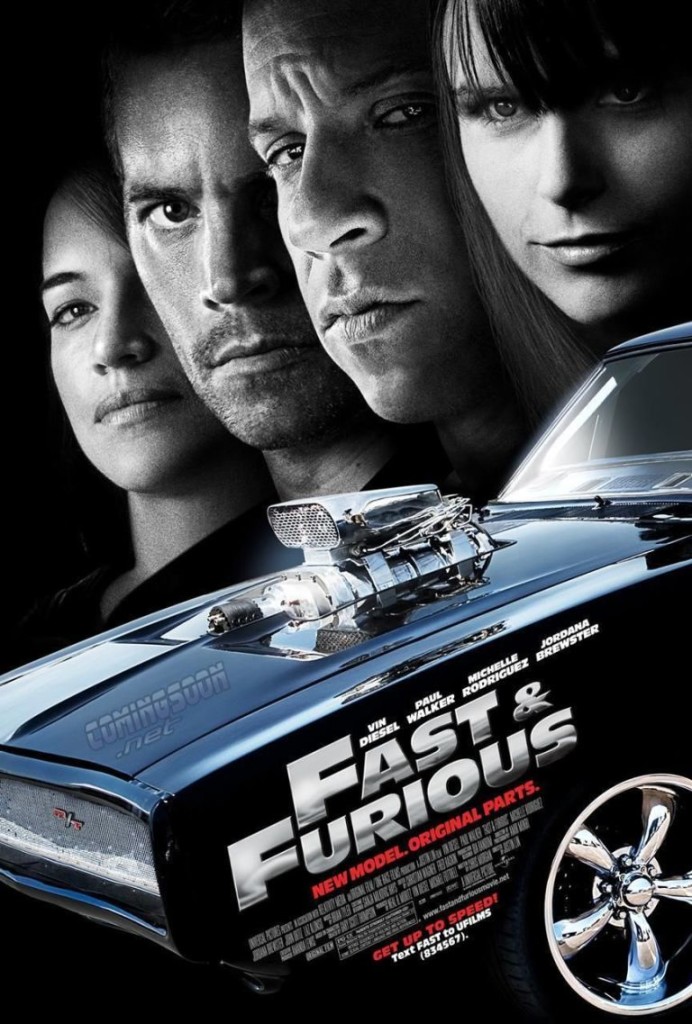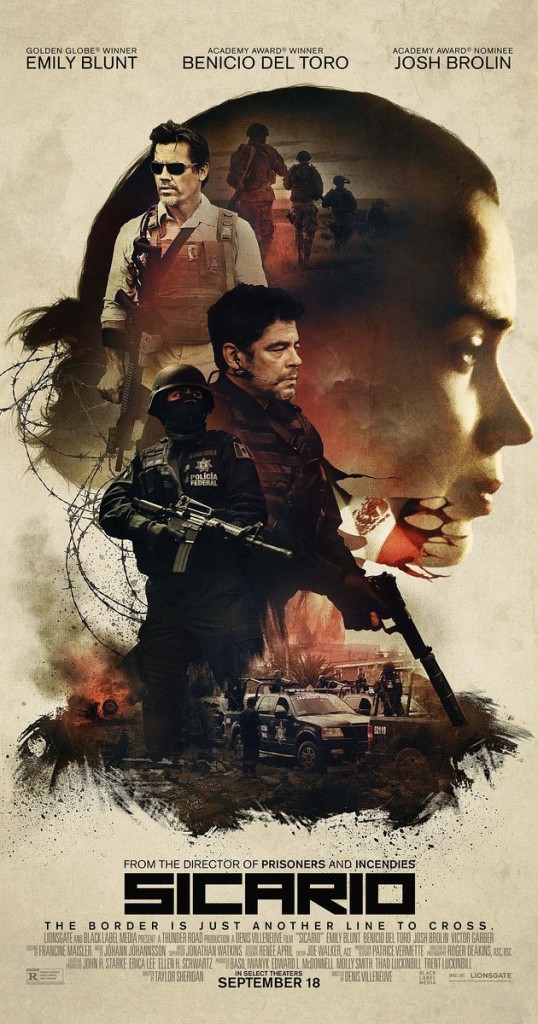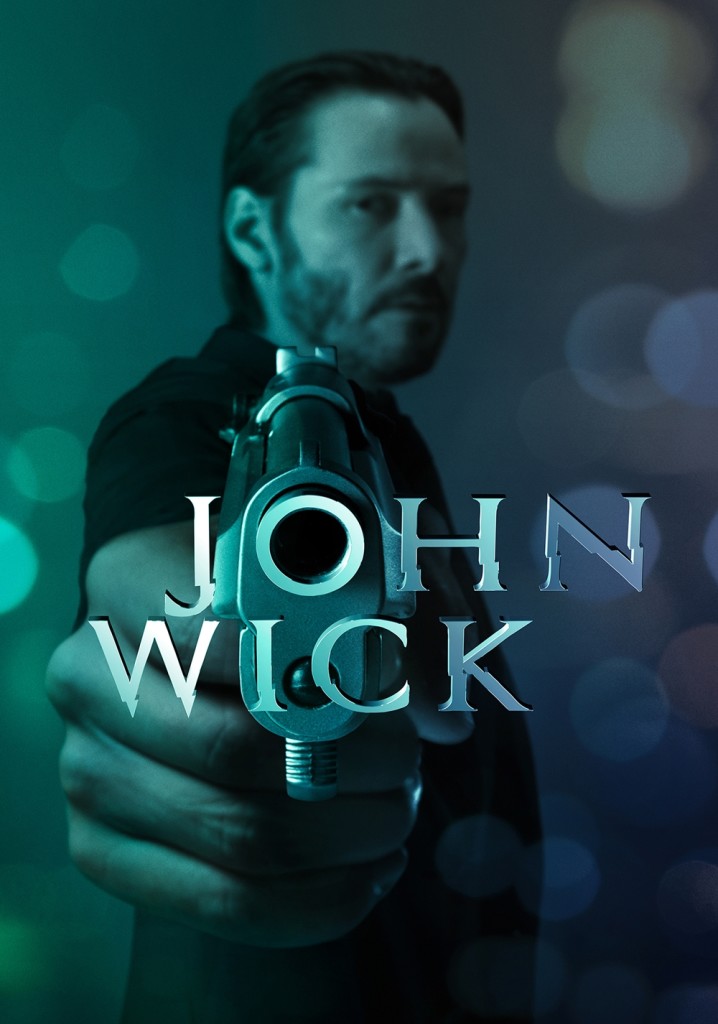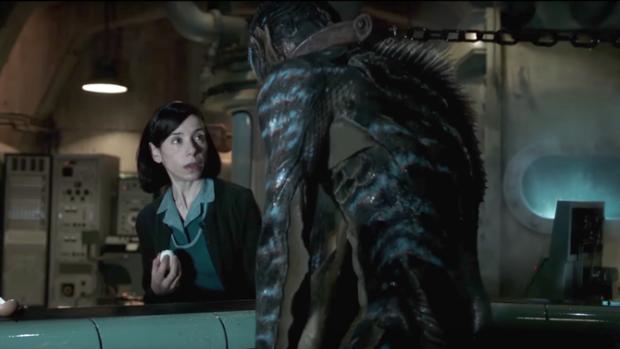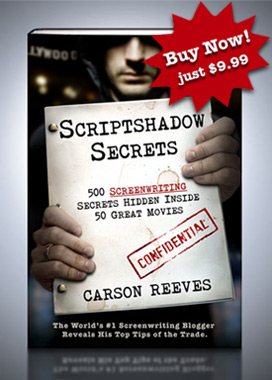Genre: Event Horror
Premise: When a group of young kids begin seeing a demonic clown around their small town, they suspect he may have something to do with all the local kids who’ve gone missing over the years.
About: You’ll float too. After the chillingly bad TV movie version of “It,” in the 1990s, Stephen King’s most notorious novel was all but discarded as a vessel for adaptation. But in recent years, a King resurgence resulted in a newfound desire to produce a feature film based on the material. The problem was length. “It” is a huge book, 1489 pages, yet it wasn’t the kind of book you could build a trilogy around. Finally, someone came up with the genius idea to split the book in two – the children’s side and the adult side – and build a movie around both. This is the children’s side. And holy heck did it kick ass this weekend at the box office, pulling in $117 million, doubling the next highest horror opening of all time.
Writer: Chase Palmer & Cary Fukunaga and Gary Dauberman (based on the novel by Stephen King)
Details: 135 minutes
Let me start off by dispelling a myth Hollywood likes to propagate. “We’re putting out good movies. People just aren’t showing up.” That statement is nowhere close to true. For the past five years, Hollywood’s been upchucking retreads they only barely convinced us to see the first time around. They haven’t been trying for awhile now and the audience is calling them on it. You have to listen to your audience, Hollywood. They want something new. And in this case, they proved it. They wanted Event Horror.
So what is this thing I’ve been talking about all week that’s going to become the hot new thing? This “Event Horror?” How is Event Horror any different from Normal Horror?
To explain this, let’s go over the current Hollywood horror formula. Throw a group of characters into a single location (cabin, haunted house, deserted warehouse, woods), add scary element (monsters, ghosts, zombies, leprechauns), let the scares take place.
The reason this formula is rarrrrrely messed with is because it works for all three points on the triangle. Hollywood loves it because single location movies are cheap to produce. Writers like it because this is the preferred setup for building believable horror – locking characters into a location with nowhere to run. And audiences like it because the setup is inherently scary.
This is why “It” feels so different. It’s not just a bunch of one-dimensional characters packed into a haunted house. We’re getting to see these characters back in their homes, we’re getting to see them hang out together in their everyday lives. But, most importantly, we’re seeing an unrestrained group of characters. They can move about freely. It’s this “open-ended” character-driven adventure setup that makes this more of an “Event.” It feels bigger and less simplistic than your average horror movie. It’s horror opened up.
For those who haven’t seen the movie or read the book, “It” follows a group of 13 year old kids in the small town of Derry, in 1988 (updated from King’s original 1950s setting). The group leader is a kid named Bill who lost his kid brother, Georgie, to mysterious circumstances last year. Everyone else knows Georgie is dead. But Bill holds out hope that he’s still out there, along with all the other kids who have gone missing from Derry over the years.
One by one, Bill and the rest of the “Losers,” as they call themselves, are visited by a creepy clown who goes by the name, “Pennywise.” Pennywise performs a slightly different bag of tricks from your average clown. He eats children, as we (spoiler) see in the script’s nail-biting opening scene. Bill believes that Pennywise is holding Georgie hostage, and rallies the troops to infiltrate Pennywise’s domain and get Georgie back. But the kids realize that this… “It”… they’re dealing with is more powerful than anything they’ve ever dealt with in their lives.
Okay, now that I’ve emptied my book of praise all over the decision to make It, did the movie – and script – live up to the hype? It did. And that’s not to say there weren’t roadblocks along the way. In fact, the very thing that makes “It” different is what causes the writers so many problems. This results in a choppy narrative that was constantly in search of calmer seas.
What the hell are you talking about, Carson?
Earlier I was talking about the traditional horror film. For argument’s sake, we’ll call it the “cabin in the woods” scenario. Put a group of characters in a cabin in the woods, take away their car (it’s broken for whatever reason), unleash some evil entities on them, and you’ve got yourself a horror film.
In this scenario, coming up with scares is easy. The characters can’t go anywhere, so you just send monsters at them and they have no choice but to fight back.
Because “It” is open-ended and the characters aren’t restrained, the writers are constantly forced to come up with scenarios by which our heroes would willingly seek out dangerous situations. Either that or manufacture ways to get them into places where horror might occur, even if it doesn’t make a lick of sense.
For example, Ben (the “fat kid”), is reading at the library about the infamous Easter Massacre weekend in Derry 30 years ago where 100 people died. As he’s reading this, he spots a trail of flaming easter eggs that lead down to the basement. So Ben simply… FOLLOWS THE EGGS DOWN INTO THE BASEMENT. It’s here, of course, that he runs into a headless child and Pennywise the Clown. This is as manufactured as it gets. Nobody in their right mind would be dumb enough to do what Ben did. But the writers don’t have much choice. They have to push these characters into scary situations somehow.
Or Beverly, the lone girl in the group. There’s a scene where she gets home, goes to her bedroom, and a postcard Ben secretly planted in her bag pops out. On the back, Ben’s written her a 12 word poem. For some odd reason, Beverly rushes into her bathroom, locks the door, sits in her tub, and reads the poem. At the time I’m thinking, “Why is she going into the bathroom to read this? The poem isn’t War and Peace. It’s 4 lines long.” Then, as she’s reading it, something starts calling her from the sink. Ohhhhhhhhh, I realized. That’s why we had to manufacture this artificially closed-door bathroom scene. So something could attack her in the sink.
You see, this is why the “trapped” scenario is the preferred horror scenario to go with. You don’t have to force scary moments like this. They come to the characters organically.
Lucky for “It,” it has a trump card. Pennywise. This is easily the most iconic horror monster of the decade. He’s a perfectly crafted evil entity. So even when we do hit these manufactured scares, we forget about them the second Pennywise hits the screen because he’s so damn scary.
I have to give the producers props for casting relative unknown Bill Skarsgard. He’s so good in this. And the character creation and the make-up and the attention-to-detail (how the left eye is a little lazy). Wow. This is the kind of monster that will give kids nightmares for years. We can debate whether that’s a good thing or not in another post.
And the characters were great. To me, “It” is Stephen King’s magnum opus. Almost all of his characters in future books are variations on these characters. But these characters were the OGs. And the difference is, he really thought about these kids’ lives. Every kid here has a legitimately tense living situation at home that informs how they act in the outside world. I don’t think King ever tried as hard as he did with this group. And we’re the beneficiaries for it.
I felt that the plotting in the film was strong. The defining choice was having Bill search for his brother. That made sure that the characters were ACTIVE – that they were out there trying to achieve something. Without that, the characters are just waiting around for bad things to happen, and that’s where plots fall, where second acts deflate. So always make sure you’re injecting ACTIVE STORYLINES into your scripts, guys.
There’s a reason this movie made 117 million dollars this weekend. It was an event. It was a spectacle. It was more than your average horror offering. So I’m expecting this trend to pick up, hopefully extending into the spec market. It’d be nice to have another lane to sell scripts in other than biopics and female John Wicks.
[ ] What the hell did I just read?
[ ] wasn’t for me
[xx] worth the read
[ ] impressive
[ ] genius
What I learned: Sometimes, in order to find something original, you have to take a genre out of its comfort zone. Sure, horror works best in tight isolated locations where your characters can’t leave. But that’s also where everything’s been done before. Leave that setup behind to find new, potentially unknown, horror avenues to explore.
P.S. Stay tuned Thursday. I’m going to break down the rejected “It” script from Cary Fukunaga to see what they changed.
I don’t know about you guys, but I’m going to see “It!” this weekend. And since the film is already breaking records at the box office (and it’s only Friday!), screenwriters are going to want to get a jump start on the trend it’s going to spawn – Event Horror. The Tommyknockers will be coming soon (god I love that book). And then any scripts that can build a bigger world into the horror genre. I repeat, jump on the trend now! Cause soon it will be flooded.
How to play Amateur Offerings: Read as much of each script as you can and submit your winning vote in the comments section. Winner gets a script review next Friday!
If you’d like to submit your own script to compete on Amateur Offerings, send a PDF of your script to carsonreeves3@gmail.com with the title, genre, logline, and why you think your script should get a shot. Good luck!
Title: Nollywood
Genre: Dramedy
Logline: An up and coming director receives an opportunity to finally make her debut feature film; with one caveat, she only has one week to shoot. So, she makes the obvious decision – film the movie in Nollywood, Nigeria.
Why you should read: Yes, I understand people’s thoughts on movies about making movies, but this script being set in the bizarre and culturally different setting of Nollywood provides natural conflict as Merritt, the main character, has to learn to adapt and absorb a foreign culture. The speed and ways movies are made in the Nollywood system is inherently a fun experience, and the process accompanies by the people involved makes observing this mass difference between Hollywood and places where they seem to actually care and treasure movies that much more interesting.
Title: PARIS COUNTDOWN
Genre: Action
Logline: An Interpol narcotics agent is forced to team up with his hostile future father-inlaw, a CIA agent, to take down a criminal ring that has targeted Paris’ most valuable treasures.
Why you should read: It placed high: American Screenwriting competition Top 100, PAGE SEMI-FINALIST. It got a STRONG CONSIDER from a screenwriting service. It’s not the generic buddy movie. It has that “Meet the parents” vibe as a plus.
Title: In the Land of Tooth & Claw
Genre: Action/Adventure
Logline: A troubled professor recovering from familial tragedy is hired to help locate her ex-husband and mankind’s greatest discovery in the most dangerous environment recorded throughout history. The late Cretaceous – the land of tooth & claw.
Why should you read? I’d really like to provide some deep, nuanced answer here, but I can’t. Aside from those small, contained Jurassic Park movies, dinosaurs aren’t really a massive fixture on the big-screen (at least recently), which is weird given how innately cinematic they are. Thought i’d take a pop at addressing that. Honestly, I’ve worked hard on it and I think at the very least In the Land of Tooth & Claw is a fun read. Pretty brisk too. I’d obviously love to throw around descriptors like energetic, horrifying, resonant and imaginative, but that’s your job, not mine. Give it a shot, preferably with an alcoholic beverage, and see if you have a good time. That’s why I do this, anyway. To try and offer a little fun. The world’s pretty garbage sometimes, and dinosaurs join a select list (sex, chocolate and Tom Cruise flicks) that traditionally provide fleeting relief.
Title: EMILY VAN HELSING VS. DRACULA
Genre: Action-adventure
Logline: Young vampire hunter Emily Van Helsing must discover her full powers and true destiny in a quest to stop Dracula’s sinister plan to conquer Victorian London.
Why you should read: because it’s a fresh angle on the Van Helsing/Dracula mythology with a badass heroine. If you like your adventures in the gaslight and mist of Victorian London, this one is for you!
Title: Meat
Genre: Mystery/Horror
Logline: A misanthropic man notices bizarre changes in himself, his wife, and the animals inhabiting the territory around their homestead as they attempt to survive self-imposed isolation.
Why you should read: After moving from North Dakota post-college at the end of 2016, I started to write scripts in my spare time and fell in love with it. My first screenplay placed in the top 20% of the 2017 Nicholl fellowship, and as of now I’ve “finished” five features and am working on my sixth. I aim to create original, meaningful stories, but even more so focus on presenting them in a unique way. MEAT has been compared to The Witch by readers due to its low budget, as well as its setting and tone. It’s an unconventional horror story that poses a moral question without appearing pretentious.
Make sure to get those amateur entries in. There WILL be an Amateur Offerings this weekend. Title, Genre, Logline, Why We Should Read, plus a PDF of your script to carsonreeves3@gmail.com
Genre: Period
Premise: During World War 2, a famous Jewish director was coerced by the Nazis to produce a propaganda film showing the concentration camps as a spa for Jews, all while being a prisoner in one. Based on the true story of Kurt Gerron.
About: For the past seven years, I’ve been writing, directing and producing my own short films. Since my love for making movies is bigger than my wallet, I almost went bankrupt because of it. With that said, a year ago I wrote this screenplay after a FULL YEAR of research. The story is full of irony, and I never understood why no one had made a movie about Kurt yet.
Writer: Marcos Vaz
Details: 116 pages
It’s so great to hear that Marcos is out there doing exactly what I told you to consider at the end of yesterday’s article. Stop waiting for people to give you approval. Bypass the bullshit and be your own approval.
With that said, if this is Marcos’s plan for a first feature, I’d probably advise him to write a cheaper movie first. For those unfamiliar with budgets, any sort of period film is going to cost a lot of money, because you’re recreating a world that no longer exists. Old costumes, old props, old locations, old looks. That gets expensive fast.
However, this is obviously a passion project for Marcos and what I’ve found is that if you are going to make your own movie, intense passion will inspire others to join your cause. People will want to be a part of your movie and they’ll help you find ways to overcome financial restraints. That’s how a ton of movies get made.
So let’s see if the writing matches the passion here.
Kurt Gerron is a famous Jewish actor, writer, and most prominently, director. His plays are legendary. And he’ll be the first person to tell you that. This guy’s got one hell of an ego on him.
When Gerron and his wife, Olga, are rounded up by the Germans and sent to a concentration gamp in Czechoslovakia called Theresienstadt, they receive special treatment from the start. The head commander at Theresienstadt, Karl Rahm, is a huge Gerron fan. So, at first, things are going swimmingly.
Then Rahm gets word that the Red Cross will be visiting soon. They want to make sure that the Germans aren’t violating any human rights. He becomes concerned that nobody here looks happy (I wonder why). So he gets this idea: Have Gerron put on a play. People will have fun producing it. People will have fun watching it. It should lift the spirits of the camp so that everyone’s busting a gut by the time the Red Cross arrives.
Meanwhile, Rahm is putting together his own “play” – as in, he’s going to make the prisoners act like this place is a blast. He’s got scripts for the kids and the prisoners and the staff, who all must hit their marks, say the right things, smile and convince these pesky Red Crossers that everything is just wonderful.
Gerron speeds through pre-production but isn’t able to get a show together before the Red Cross arrives. Strangely, that turns out to be no problem, because the Red Cross found everything to be lovely, even going so far as to write a glowing letter that appeared in all of the world’s biggest newspapers.
Because things went so well, Rahm gives Gerron another task. He wants him to film a documentary of Theresienstadt and make it look like a vacation getaway. Gerron is thrilled that he still gets to put on a show and gets back to work.
Unfortunately, with the Russian army closing in and the end of the war nearing, Rahm is forced to ship as many Jews as possible to the killing camps, and Gerron ends up being one of those prisoners. In the end, he dies in the gas chambers of Aushwitz.
Okay Marcos. I’m going to get a little intense here. But it’s only because I see a lot of potential in this. Unfortunately, if we’re going to meet that potential, we’re going to need a page 1 rewrite. And that’s because the plotting is all over the place. The King’s Fool has no structure.
Gerron gets to this concentration camp and his mission is to produce a play that makes the prisoners happy so they won’t incite suspicion when the Red Cross arrives. This is a strange goal for a movie, since you’re basically building an objective that the audience wants the hero to fail at. If our hero succeeds, a camp full of Jews lives on in misery. Not exactly a situation to root for.
In addition to this, we have this odd secondary play going on where Rahm is directing all of the prisoners to follow a script for the Red Cross. I must have asked myself a thousand times, why wouldn’t you combine these two storylines into one and have Gerron be the one who’s directing the pretend happy camp?
Because clearly, Marcos had trouble plotting them both. First of all, the prisoners never got a chance to see the play! Which I thought was the whole point – they would see it, be happy, and that happiness would convince the Red Cross that everything was great. Instead, the Red Cross shows up, and decides everything’s great anyway. So then what was the point of the play plotline?
As if this wasn’t problematic enough, there were still 42 pages left in the script! And the main plotline was over! What do you do now? Marcos decides to introduce a new plot where Gerron is asked to direct a documentary of the camp. That becomes the driving force for the rest of the film.
Because this plotline comes on so late, it doesn’t have time to properly build. And by the time it does gain steam, we have to end it. Which puts a confused exclamation point on this structurally schizophrenic film.
I will say that I loved the moment in Aushwitz where he and his wife perform this dazzling scene for the camp, only for us to find out in the closing title cards that they were killed as soon as they got off the train. The problem was, it was so clumsy getting here that we can’t appreciate the greatness of this scene.
This goes back to advice I routinely give on the site yet still writers refuse to listen. Keep your story simple. The more you complicate things, the worse your script is going to get. Unless you’ve written 20 scripts and understand how complexity works in plotting, keep it simple.
Throughout The King’s Fool, it seemed like Marcos was in way over his head. If he just would’ve simplified the plot, he’d have been fine.
That plot needs to be one of two things. Either Gerron is the director for the “pretend happy camp” Rahm needs ready for the Red Cross. Or Gerron directs the documentary of the camp so that it looks like a vacation spa. One of those two is your movie right there. And it’s probably the second one.
Not only would this be good for the film’s structure, but it would allow us to add some heroism into the story.
In the current draft, we learn that the Russians are getting closer. You’ve also built up this death sentence storyline where anyone who gets on the transports is going to the death camps. You could easily work those two elements into a heroic moment for Gerron.
While shooting a scene, I could see him learn that 2000 prisoners are about to be sent away on the transports. Gerron storms out and insists that they bring the prisoners back. “I need them for extras. We have to make this look real.” And there’s this big hubbub where Rahm won’t budge and neither will Gerron, and finally Rahm relents, giving him his extras, and Gerron just saved 2000 people.
I don’t know if stuff like this happened of course. But you need to look for moments LIKE this. Where the main character actually does something heroic.
More importantly, though, the plot needs to be simplified. I do believe there’s a movie here. This is an interesting setup. But holy heck do we need a proper plot.
Script Link: The King’s Fool
[ ] What the hell did I just read?
[x] wasn’t for me
[ ] worth the read
[ ] impressive
[ ] genius
What I learned: You don’t want to have to restart your story on page 75. If you have to give your main character an entirely new goal at that point in the story, there’s probably something wrong with your structure.
What I learned 2: When you include singing in your script, make sure to italicize all of it to visually differentiate it from regular dialogue.
A long time ago, in a galaxy far far away, I was writing a screenplay. I’d come upon a particularly important scene where two brothers were reuniting for the first time in a decade. But I was having trouble starting the scene. Not long before this, I’d gotten feedback from a producer on a different script and one of his notes was that I needed to add more depth to my characters. Conversely, I’d also received coverage from a reader on a third script and he was telling me my dialogue scenes were too long.
The two pieces of advice seemed at odds with one another. How could I explore my characters on a deeper level if I had to move through their dialogue quicker? It was at this moment that I had a revelation – Different audiences want different things. Sure, everybody wants a good script. But what the reader’s looking for isn’t always what the producer’s looking for. And what the producer’s looking for isn’t always what the audience is looking for. Confusing, right? So today I want to talk about the six main audiences you’ll encounter in screenwriting and how to develop a strategy to satisfy all of them.
It should be obvious that I’m generalizing. Not ALL readers like the same stuff. Not all producers like the same stuff. This is based on what I’ve found to be true on a GENERAL LEVEL. So let’s get into it.
THE READER – Because the reader is the first line of defense, they read the most crap, and this gives them a negative predisposition to everything they read. They know they’ve been saddled with another 110 page piece of crap because the last 20 scripts they’ve read have been 110 pieces of crap. This makes the average reader extremely impatient, which is why the scripts that do well with readers are simple and easy to follow. Limited locations, limited characters, clear concept.
Kinds of scripts they like: The Shallows, The Hitman’s Bodyguard, Get Out, The Equalizer
Kinds of scripts they dislike: Lord of the Rings clones, any period piece that could potentially star Keira Knightly, anything with tons of characters
THE PRODUCER – Producers are often looking for scripts with more substance. They know that they’re going to have to get good actors to move the needle. To get good actors you’re going to need juicy characters. They also need to attract a good director to get any kind of funding, and good directors favor weightier themes, complex concepts, unexpected plots, and fresh ideas. Generally speaking, producers don’t go for simplistic guy-with-a-gun setups. They understand that every project is a 3-10 year journey from page to screen. If they’re going to invest that much time in something, it’s going to need some substance.
Kinds of scripts they like: The Imitation Game, Logan, Hidden Figures, Dallas Buyers Club
Kinds of scripts they dislike: London Has Fallen, Dirty Grandpa, Fifty Shades of Grey, Happy Gilmore
THE AGENT – A lot of people are confused by what agents are looking for. I’ll make it easy for you. Agents are looking for writers who can make them money for the next 25 years. That’s it guys. Agents make a tiny percentage of a writer’s earnings so all they care about is, “Is this guy talented enough to consistently get hired?” To that end, they are looking for talented people. This is most readily identified by a UNIQUE VOICE. If you have your own voice as a writer, you’re going to stand out from the pack, which is going to get you hired more than the average writer.
Kinds of scripts they like: Pulp Fiction, The Social Network, True Detective, 500 Days of Summer
Kinds of scripts they dislike: John Wick before it was John Wick, Lucy, Ouija
THE STUDIO – The studio is about one thing and one thing only: Maximizing profit. They want anything that makes money. I mean this is the business that gave us The Emoji Movie and Boss Baby, so you know it has no soul. To that end, understanding the kinds of movies they like is fairly easy. They want something that will require the least amount of investment that will provide the biggest amount of return. And more recently, that formula has shifted. With audiences mostly showing up for spectacle these days, the investment must now be giant and the return enormous.
Kinds of scripts they like: The Fast and the Furious, Lord of the Rings, Wonder Woman, Inception, The Hunger Games
Kinds of scripts they dislike: La La Land, Joy, Sicario, Dallas Buyers Club
THE INDUSTRY – An often overlooked audience is the industry itself. These are your peers, development execs, agents, studio execs, Scriptshadow, contests, and anyone who reads scripts. This is an interesting sub-sector because these people don’t have to put their money where their mouth is. If they like a script, they just have to say that they like it. And for this reason, this audience celebrates quirkier less commercial fare that would otherwise go overlooked. These are essentially the scripts that end up on the Black List at the end of the year.
Kinds of scripts they like: The Beaver, Sicario, The DUFF, The Revenant, Eternal Sunshine
Kinds of scripts they dislike: San Andreas, Taken, The Hunger Games
THE PAYING AUDIENCE – Ah, we finally get to the sector of people that all of this is meant for. The audience! So why does it seem like they’re the least important?? Because, in a way, they are. Look at how many levels the script has to get through to get to this place. That’s without mentioning the more specialized audience-sectors I didn’t get into (actors, directors, financiers). Another irony is that the paying audience is the least discerning of all these groups! They just want to go to the theater or turn on their Netflix and be entertained for two hours. For this reason, mainstream audiences tend to like stuff that other audiences would characterize as “low-brow” or “simplistic.”
Kinds of scripts they like: Guardians of the Galaxy, John Wick, The Lego Movie, Ride Along, Transformers
Kinds of scripts they dislike: The Beaver, Boyhood, Wild, Inherent Vice
Whoa, you’re telling us we have to write to all of these people, Carson? How in the world are we supposed to do that?? Well, the good news is you don’t. In fact, I’m going to give you the three best strategies to break in as a writer, and who you should be writing for in each. I’m going to assume that you’re an amateur writer with little to no connections in the industry. And I’m going to exclude trends. This advice will work today, and it should work in ten years. I should point out that, yes, the best strategy may feel like a cop-out. But I stand by it 100%. It is, without a doubt, the EASIEST way to break in as a writer. Okay, here we go…
Strategy #3 – The Spec Sale Route
The spec sale route is still a viable way to break in. It’s just that the rules have changed. It used to be that studios would buy these gigantically-budgeted spec scripts, even though barely any of them got made. Nowadays, they’re smarter than that. They only buy scripts they think they can turn into movies. That means low-budget high-concept easy-to-market genre material. The Shallows, Get Out, Cloverfield Lane are pristine examples of the types of scripts you should be writing. This means you will be writing for THE READER. These scripts are easy to read and therefore will be celebrated by the reader, who will kick them up to their bosses who will overlook the lack of depth because they don’t need major actors or seasoned directors to get these projects off the ground. They’re some of the easiest movies to get through the system which is why it’s such a smart idea to write one.
Strategy #2 – The Industry Buzz Route
The Industry Buzz Route means writing a script that’s, in many ways, the opposite of a spec sale script. You want to write something that takes risks, that shows your unique voice as a writer, that shows your ability to explore complex themes and complex characters. If the Spec Sale route is to show you can entertain, the Industry Buzz Route is to show you can write. This means you’ll be writing to THE INDUSTRY and that your ultimate goal is to get on The Black List. The nice thing about this route is that you don’t have to worry as much about your script’s commercial prospects because, if you make The Black List, the machine starts putting the project together for you (agents will start sending the script to directors and actors and people will sign on simply because they trust the other people who are signing on – you’d be amazed by how this happens). If you have the next Truman Show, the next Passengers, the next Juno, the next Being John Malkovich, and yes, the next Beaver, this route is for you.
Strategy #1 – The Make The Movie Yourself Route
There’s a reason this is, and will always be, the fastest way to break in as a writer. What’s the one commonality you see throughout this article? All the people you have to win over with your script, right? It’s one of the shittiest things about this town, is that you can find someone who literally LOVES your script, but when they kick it up to the person above them, that person hates it. And that line of opportunity is now dead. Well what if I told you you didn’t have to win anybody over with your script? Sound like a dream scenario? That’s what directing your own scripts allows you to do. Sure, that means new types of challenges (raising money and learning the skill of filmmaking). But if you really want to break into this business, the option that doesn’t rely on a long ladder of people saying yes is this one. And to those of you saying, “But I don’t know anyone that would help me make a movie.” Uhhhh, you know the people here on this site, the people who comment every day. If they’re in your area, that’s a start. And all you need is a few people to get something started.
Genre: Fantasy/Drama
Premise: A young mute woman who works for the government in the 1960s stumbles across a top secret project, an intelligent amphibious creature, and falls in love with it.
About: You may have heard about The Shape of Water recently. Famed filmmaker Guillermo Del Toro’s newest movie screened at the Telluride Film Festival last week and received one of those famed 20 minute standing ovations films seem to receive a lot of these days (and that have nothing to do with publicists. Nothing at all). But seriously, the word on this one is that it’s great. My issue with del Toro has always been that his superior filmmaking skills have masked the clumsiness of his pen. Which is why I wanted to read this script before seeing the film. If this works on the page, then maybe del Toro will have finally created something that isn’t just fun to look at.
Writers: Guillermo del Toro & Vanessa Taylor (based on an idea by Daniel Kraus and Guillermo del Toro)
Details: 94 pages
One of the great crimes we commit as film consumers is allowing others to tell us what to like.
Guillermo del Toro’s career beginnings coincided with the rise of Ain’t It Cool News. AICN’s creator, Harry Knowles, fell in love with del Toro, praising him religiously on the site, and since back then AICN was the only movie site in town, every movie geek followed suit and fell in love with del Toro as well.
Even I fell into the trap. Watching his movies with a distinct feeling of boredom, I figured I must be doing something wrong – watching it the wrong way or focusing on the wrong thing. And when his movies were over, I’d often ponder, “Even though I didn’t like this, everybody else did so I must be wrong.”
Now that I can think for myself, I know why I’ve disliked so much del Toro. His writing is sloppy. His plots are often flighty, it’s not always clear what the focus is, and he has major issues finding a consistent tone. To this day, going to watch the 2001 del Toro flick, The Devil’s Backbone, remains one of the most perplexing moviegoing experiences of my life. All the critics had talked about how great the film was. Yet what I saw was a wandering inconsistent genre-confused mess.
This is where The Shape of Water gets interesting. Del Toro has wisely brought in a second screenwriter, Vanessa Taylor. I like Vanessa Taylor’s writing. I remember back in the early days of Scriptshadow when I read her first script (then titled “Untitled Vanessa Taylor Project”). It chronicled an older couple going through marriage problems. It’s a script that should’ve been boring. Yet Taylor found a truth and authenticity to the relationship that elevated it, then mixed in a hint of humor to turn it into one of the most memorable scripts of the year.
Taylor would go on to win the highly coveted Divergent assignment, and she’s currently scripting the live-action Aladdin movie. It always fascinates me to see writers who not so long ago were scripting these tiny little “nothing” movies now writing some of the biggest films in town. It’s a reminder that success CAN and DOES happen. You just have to write something that resonates with people and you’re on your way.
Anyway, due to these two creative voices, one I detest and one I enjoy, I have no idea what to expect from Shape. But I’m hoping for the best.
The year is 1963. The town is Pittsburgh. We’re talking the epitome of grimy blue-collar America here. Elisa is a rather unconventional representation of that world then. She’s a 35 year-old mute spinster who lives in a small apartment by herself. The highlight of her day is 2 minutes of masturbation in the tub before work.
At least Elisa has a kinda-cool job. She’s a janitor at a secret government underground facility downtown. She cleans rooms where scientists test their latest jet engines or cutting edge (for 1965) robotic arms. Because Elisa never talks to anybody, she’s generally overlooked. Which is probably how she gets into this mess in the first place.
You see, the government brings in their most top secret project yet – an amphibious man-like-thing that lives in water. This is such a big deal that they have to bring a high-ranking military man, Strickland, in, to oversee experiments on the creature. As you’d expect, these experiments are brutal. They figure out, for example, that the creature can only survive outside of water for 30 minutes at a time. So they observe him while he’s left out past 30 minutes… you know, just to see how intensely he suffers.
Because Elisa is in charge of cleaning Amphibian Man’s room, the two start sharing little looks, which leads to her signing him, which leads to him signing back, which leads to them falling in water love. When the intensity of the experiments are ratcheted up, Elisa can’t stand by and do nothing. So she orchestrates an escape plan and takes the creature to her home!
This, naturally, results in a big hubbub at the facility. Strickland starts asking people if they know who’s got him. Several of Elisa’s co-workers who were aware she had an affinity for the creature are on the verge of cracking. So it’s only a matter of time before Elisa is discovered. This leads to a race to free Amphibian Man back into the sea.
Let’s start with the good and hope it lasts longer than a sentence. The Shape of Water is an ORIGINAL IDEA. That needs to be commended. These days, auteur directors are becoming our only outlet for original ideas and that sucks. But I want to start there because I believe in getting more original ideas into theaters even if I don’t personally like those ideas. I mean, isn’t that the point? Hollywood’s stuff is so homogenized and demograph-tested that it’s guaranteed not to be unlikable. With original material, that guarantee isn’t there. Which is why original ideas are so thrilling. You don’t know what to expect.
As for where The Shape of Water falls on the ‘like’ spectrum, it most certainly depends on how big of a del Toro fan you are. If you aren’t a fan, like myself, you see cracks in the story everywhere.
Let’s begin with our mute main character. Yes, that sound you heard was me sighing. Mute main characters. Deaf main characters. Both are crutch-device screenwriting at their worst. The idea behind a deaf character is that they’re the ultimate underdog. It conveys a writer so desperate for you to love their main character that they will go to the absolute extreme to do so.
Of course, it’s for this very reason that it never works. We’re hyper aware that you’re pining for our sympathy, so we go running as fast as we can in the opposite direction. Once the viewer is aware of the writer, there is no suspension of disbelief and the point of the story is moot.
The only time these things work is when – and I just talked about this yesterday – you explore these things AUTHENTICALLY. If you study and research what it’s really like to be a mute, what someone like this goes through on a day-by-day basis. And then you bring that very specific life experience into the character, then yes, it’s going to be great.
But writers rarely do this because it takes time and it’s hard. It’s much easier to slap a physical flaw onto a character in the cheap hope that the audience instantly sympathizes with them despite knowing nothing about them. It’s a screenwriting trick, the very definition of a gimmick. And for any frequent filmgoer, they see through it immediately. (spoiler) And don’t even get me STARTED if, late in the script, the mute character finally talks.
Not only that, but mute characters aren’t conducive for filmic storytelling. Readers don’t enjoy reading entire scripts and not seeing a single line of dialogue from their main characters. It’s hard to reconcile that. Which is why, if you’re going to do it, you should be a writer-director, like del Toro, who doesn’t have to run the script by anyone to get it made.
Even if you can get past that, you still have to deal with del Toro’s biggest weakness – his wildly inconsistent tone. This is something you see in all his movies. At best, it’s annoying, at worst, it’s uncomfortable. For example, in The Shape of Water you’ll have a zany zoinks scene where Elisa will nearly get sucked into the giant jet engine while cleaning, and then, later in the film, an extremely awkward scene where Strickland is borderline raping his wife. It’s like, what kind of movie are you trying to make here??? You shouldn’t even have your main character masturbating in a tub every morning. This is a fantasy film. Not 9 and a half weeks.
I’ll finish by saying this. In the water-based love story sub-genre, The Shape of Water finishes above Lady in the Water but below Splash. So that’s something I guess.
[ ] What the hell did I just read?
[x] wasn’t for me
[ ] worth the read
[ ] impressive
[ ] genius
What I learned: Unless you’re going to truly explore what it’s like to be a mute or deaf, you should avoid making your main character either. In my experience, mute and deaf characters work best in secondary roles, where they don’t have to carry the entire story on their shoulders.

